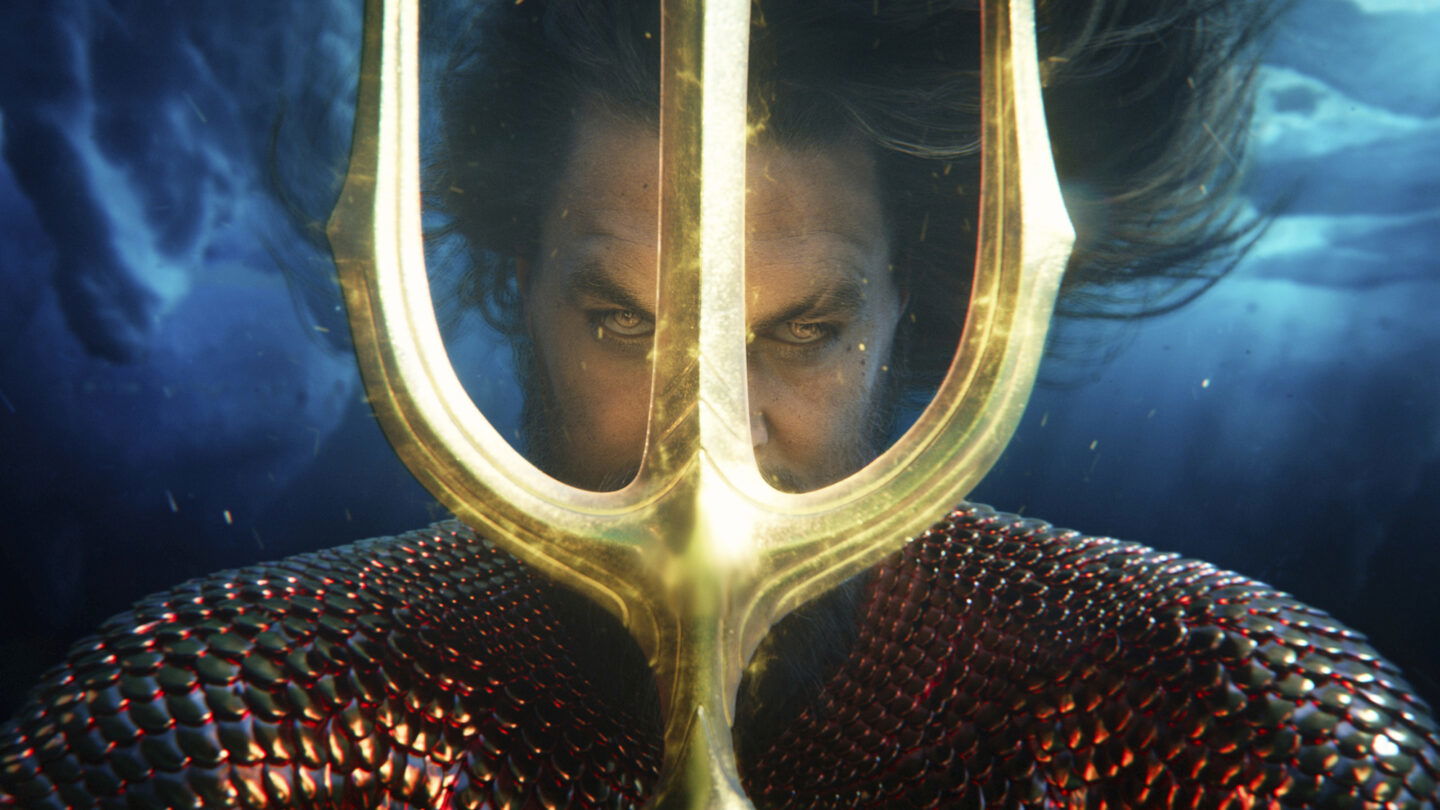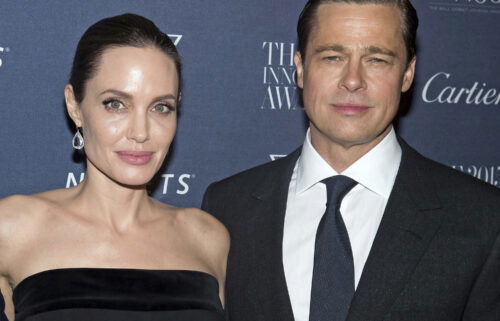Guilty pleasures

By NewsPress Now
Movies rarely reflect climate change crisis and researchers want to change that
PORTLAND, Maine | Aquaman might not mind if the oceans rise, but moviegoers might.
That’s one of the takeaways from a new study conducted by researchers who set out to determine if today’s Hollywood blockbusters are reflective of the current climate crisis. The vast majority of movies failed the “climate reality check” proposed by the authors, who surveyed 250 movies from 2013 to 2022.
The test is simple — the authors looked to see if a movie presented a story in which climate change exists, and whether a character knows it does. One film that passed the test was the 2017 superhero movie “Justice League,” in which Jason Momoa’s Aquaman character says, “Hey, I don’t mind if the oceans rise” to Ben Affleck’s Bruce Wayne.
But most movies fell short — fewer than 10% of the 250 films passed, and climate change was mentioned in two or more scenes of fewer than 4% of the films. That’s out of touch with a moviegoing public that wants “to see their reality reflected on screen,” said Colby College English professor Matthew Schneider-Mayerson, lead researcher on the study.
“The top line is just that the vast majority of films, popular films produced over the last 10 years in the United States, are not portraying the world as it is,” Schneider-Mayerson said. “They are portraying a world that is now history or fantasy — a world in which climate change is not happening.”
Researchers at Maine’s Colby College published the study in April along with Good Energy, a Los Angeles-based environmental consultancy. The results were peer reviewed, and the authors are seeking publication in scientific journals. The researchers view the test as a way for audience members, writers and filmmakers to evaluate the representation of climate change on screen.
Some results were surprising. Movies that at first glance appear to have little overlap with climate or the environment passed the test. “Marriage Story,” Noah Baumbach’s emotive 2019 drama about the collapse of a relationship, passed the test in part because Adam Driver’s character is described as “energy conscious,” Schneider-Mayerson said.
The 2022 whodunnit “Glass Onion” and the 2019 folk horror movie “Midsommar” were others to pass the test. Some that were more explicitly about climate change, such as the 2021 satire “Don’t Look Up,” also passed. But “San Andreas,” a 2015 movie about a West Coast earthquake disaster, and “The Meg,” a 2018 action movie set in the ocean, did not.
The authors narrowed the selection of movies by excluding films not set on Earth or set before 2006 or after 2100. They found streaming services had a higher percentage of movies that included climate change than the major studios did.
The study is “valuable for marketing purposes, informational purposes, data accumulation,” said Harry Winer, director of sustainability at the Kanbar Institute of Film and Television at the New York University Tisch School of the Arts. Winer, who was not involved in the study, said it could also help serve as an incentive to connect audiences with climate stories.
“The audience will be more open to hearing a dialogue about what is right and what is wrong,” Winer said. “It’s a conversation starter.”
The study authors said they see the climate reality check as a kind of Bechdel-Wallace test for climate change. Alison Bechdel, a cartoonist, is credited with popularizing that test in the 1980s by incorporating her friend Liz Wallace’s test about gender representation in film into a comic strip. The test asks if a movie includes at least two female characters who have a conversation about something other than a man.
Bechdel herself spoke highly of the study’s climate test, which she described as “long overdue” in a social media post during this year’s Academy Awards season. Bechdel said in an e-mail to The Associated Press that “for a movie set in the present to ignore this existential threat just doesn’t make sense anymore” in the age of climate change.
“I do worry that screenwriters might do it in a kind of rote way, which could be counterproductive, just like rote ‘strong female characters’ are,” Bechdel said. “But injecting an awareness of our communal plight into the stories we ingest seems like a no-brainer.”
Albert Ruddy,
Oscar-winning producer of ‘The Godfather’ dies at 94
NEW YORK | Albert S. Ruddy, a colorful, Canadian-born producer and writer who won Oscars for “The Godfather” and “Million Dollar Baby,” developed the raucous prison-sports comedy “The Longest Yard” and helped create the hit sitcom “Hogan’s Heroes,” has died at age 94.
Ruddy died “peacefully” Saturday at the UCLA Medical Center, according to a spokesperson, who added that among his final words were, “The game is over, but we won the game.”
Tall and muscular, with a raspy voice and a city kid’s swagger, Ruddy produced more than 30 movies and was on hand for the very top and very bottom, from the “Godfather” and “Million Dollar Baby” to “Cannonball Run II” and “Megaforce,” nominees for Golden Raspberry awards for worst movie of the year.
Otherwise, he had a mix of successes such as “The Longest Yard,” which he produced and created the story for, and such flops as the Arnold Schwarzenegger thriller “Sabotage.” He worked often with Burt Reynolds, starting with “The Longest Yard” and continuing with two “Cannonball Run” comedies and “Cloud Nine.” Besides “Hogan’s Heroes,” his television credits include the movies “Married to a Stranger” and “Running Mates.”
Nothing looks better on your resume than “The Godfather,” but producing it endangered Ruddy’s job, reputation and his very life. Frank Sinatra and other Italian Americans were infuriated by the project, which they feared would harden stereotypes of Italians as criminals, and real-life mobsters let Ruddy know he was being watched. One night he heard gunfire outside his home and the sound of his car’s windows being shot out.
On his dashboard was a warning that he should close the production, immediately.
Ruddy saved himself, and the film, through diplomacy; he met with crime boss Joseph Colombo and a couple of henchmen to discuss the script.
“Joe sits opposite me, one guy’s on the couch, and one guy’s sitting in the window,” Ruddy told Vanity Fair in 2009. “He puts on his little Ben Franklin glasses, looks at it (the script) for about two minutes. What does this mean “fade in?” he asked.’”
Ruddy agreed to remove a single, gratuitous mention of the word “mafia” and to make a donation to the Italian American Civil Rights League. Colombo was so pleased that he urged Ruddy to appear with him at a press conference announcing his approval of the movie, a gathering that led to Ruddy’s being photographed alongside members of organized crime.
With the stock of parent company Gulf & Western dropping fast, Paramount fired Ruddy, only to have director Francis Coppola object and get him rehired. In the end, mobsters were cast as extras and openly consulted with cast members. Ruddy himself made a cameo as a Hollywood studio guard.
“It was like one happy family,” Ruddy told Vanity Fair. “All these guys loved the underworld characters, and obviously the underworld guys loved Hollywood.”
With a cast including Marlon Brando, Al Pacino and Robert Duvall, “The Godfather” was a critical and commercial sensation and remains among the most beloved and quoted movies in history. When Ruddy was named winner of the best picture Oscar at the 1973 ceremony, the presenter was Clint Eastwood, with whom he would produce “Million Dollar Baby,” the best picture winner in 2005. Upon the 50th anniversary of “The Godfather,” in 2022, Ruddy himself became a character. Miles Teller played him in “The Offer,” a Paramount+ miniseries about the making of the movie, based on Ruddy’s experiences.
“Al Ruddy was absolutely beautiful to me the whole time on ‘The Godfather’; even when they didn’t want me, he wanted me,” Pacino said in a statement. “He gave me the gift of encouragement when I needed it most and I’ll never forget it.”
Ruddy was married to Wanda McDaniel, a sales executive and liaison for Giorgio Armani who helped make the brand omnipresent in Hollywood, whether in movies or at promotional events. They had two children.
Born in Montreal in 1930, Albert Stotland Ruddy moved to the U.S. as a child and was raised in New York City. After graduating from the University of Southern California, he was working as an architect when he met TV actor Bernard Fein in the early 1960s. Ruddy had tired of his career, and he and Fein decided to develop a TV series, even though neither had done any writing.
Their original idea was a comedy set in an American prison, but they soon changed their minds.
“We read in the paper that … (a) network was doing a sitcom set in an Italian prisoner of war camp and we thought, ‘Perfect,’” Ruddy later explained. “We rewrote our script and set it in a German POW camp in about two days.”
Starring Bob Crane as the wily Col. Hogan, “Hogan’s Heroes” ran from 1965-71 on CBS but was criticized for trivializing World War II and turning the Nazis into lovable cartoons. Ruddy remembered network head William Paley calling the show’s concept “reprehensible,” but softening after Ruddy “literally acted out an episode,” complete with barking dogs and other sound effects.
While Fein continued with “Hogan’s Heroes,” Ruddy turned to film, overseeing the low-budget “Wild Seed” for Brando’s production company. His reputation for managing costs proved most useful when Paramount Pictures head Robert Evans acquired rights to Mario Puzo’s bestselling novel “The Godfather” and sought a producer for what was supposed to be a minor, profit-taking gangster film.
“I got a call on a Sunday. ‘Do you want to do The Godfather?’” Ruddy told Vanity Fair. “I thought they were kidding me, right? I said, ‘Yes, of course, I love that book’ — which I had never read.”
U.S. vows more returns of looted antiquities as Italy celebrates latest haul
ROME | Italy on Tuesday celebrated the return of around 600 antiquities from the U.S., including ancient bronze statues, gold coins, mosaics and manuscripts valued at $65 million, that were looted years ago, sold to U.S. museums, galleries and collectors and recovered as a result of criminal investigations.
U.S. Ambassador Jack Markell, Matthew Bogdanos, the head of the antiquities trafficking unit of the New York district attorney’s office, and members of the U.S. Homeland Security Investigations department were on hand for the presentation alongside the leadership of Italy’s Culture Ministry and Carabinieri art squad.
It was the latest presentation of the fruits of Italy’s decades-old effort to recover antiquities that were looted or stolen from its territory by “tombaroli” tomb raiders, sold to antiquities dealers who often forged or fudged provenance records to resell the loot to high-end buyers, auction houses and museums.
Markell said that Washington was committed to returning the stolen loot “to where it belongs” as a sign of respect for Italy and its cultural and artistic heritage.
“We know that safeguarding this history requires care and vigilance, and this is why we do what we do,” he said, adding that the U.S. was keeping a close eye on the latest target for art traffickers: Ukraine.
Not included in the latest haul from the U.S. was the “Victorious Youth” ancient Greek bronze statue, the object of a decades-long court battle between Italy and the Malibu, California-based Getty Museum. The prized statue recently made headlines anew when the European Court of Human Rights strongly backed Italy’s right to seize it, reaffirming that it had been illegally exported from Italy.
Bogdanos and Homeland Security officials declined to comment on whether or when the “Victorious Youth” might be returned, saying it’s part of an ongoing investigation.
Among the most valuable artifacts on display Tuesday was a fourth-century Naxos silver coin depicting god of wine Dionysius that was looted from an illicit excavation site in Sicily before 2013 and smuggled to the United Kingdom. Bogdanos said the coin, which was being offered for sale for $500,000, was found in New York last year as part of an investigation into a noted British coin dealer.
He said that other items were returned from New York’s Metropolitan Museum of Art and some of the well-known New York philanthropists who donated artifacts to its collections that turned out to have been stolen.
The returned artifacts, ranging from the ninth century B.C. to the second century, also included a life-sized bronze figure, as well as bronze heads and multiple Etruscan vases. Other items, including oil paintings from the 16th and 19th centuries, had been stolen from Italian museums, religious institutions and private homes in well-documented thefts, the carabinieri said.
Bogdanos, who forged an alliance with the Italian carabinieri art squad as they tried to recover Iraq’s stolen antiquities after the U.S. invasion, said that Washington doesn’t distinguish between items taken during illicit excavations or those stolen in thefts: it all amounts to looting.
“Looting is local,” Bogdanos said. Locals “know when the security guards come on, they know when they come off. They know when the security guards are guarding particular sites and not others. They know when there are scientific, proper, approved archeological excavations, and then they know when those archaeological excavations close for example, for the winter or for lack of funding.”
Given that, he said, there will always be looting.
“Our job is to minimize it, increase the risk to those who would engage in this traffic, convict them and where appropriate, sentence them,” Bogdanos said.
Former ‘General Hospital’ actor Johnny Wactor killed in shooting
LOS ANGELES | Former “General Hospital” actor Johnny Wactor was shot and killed when he interrupted thieves stealing the catalytic converter from his car in Los Angeles, his family said Sunday.
The shooting occurred around 3 a.m. Saturday when the victim approached three men in downtown LA, according to the Los Angeles Police Department.
His mother, Scarlett Wactor, told ABC 7 that her 37-year-old son had left work at a rooftop bar with a coworker when he saw someone at his car and thought it was being towed. A mask-wearing suspect opened fire, his mother said.
Three suspects drove away from the scene, police said. Wactor was rushed to a hospital, where he died.
There were no arrests as of late Sunday.
Wactor’s agent, David Shaul, said the actor was “a real moral example to everyone who knew him.”
“In the highs and lows of a challenging profession he always kept his chin up and kept striving for the best he could be,” Shaul said in a statement Sunday. “Our time with Johnny was a privilege we would wish on everyone. He would literally give you the shirt off his back. After over a decade together, he will leave a hole in our hearts forever.”
Wactor portrayed Brando Corbin on the ABC soap opera from 2020 to 2022. He also appeared in a variety of films and TV series, including “Station 19,” “NCIS,” “Westworld” and the video game “Call of Duty: Vanguard.”
—From AP reports



